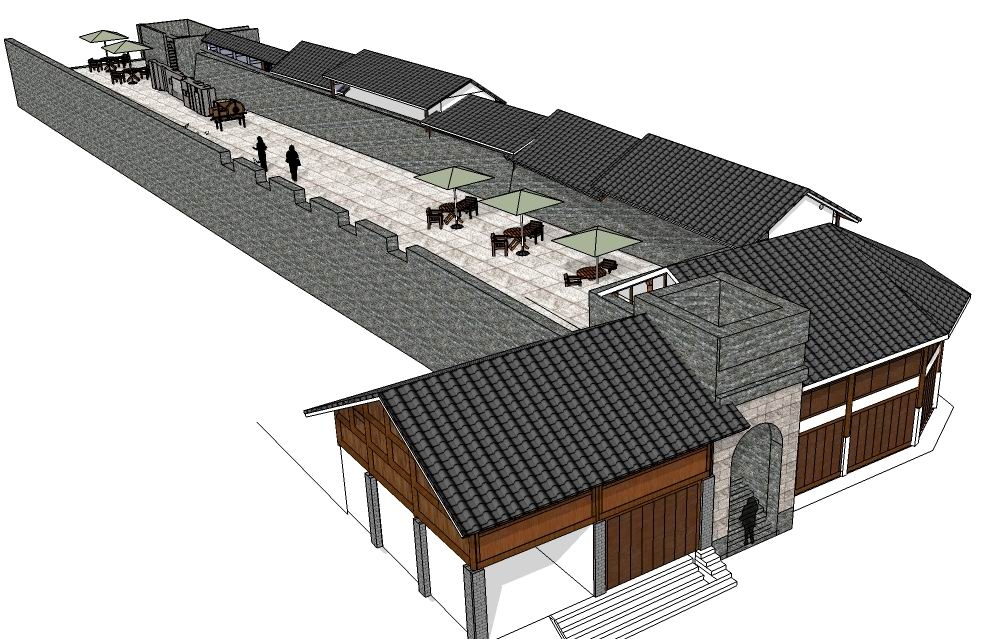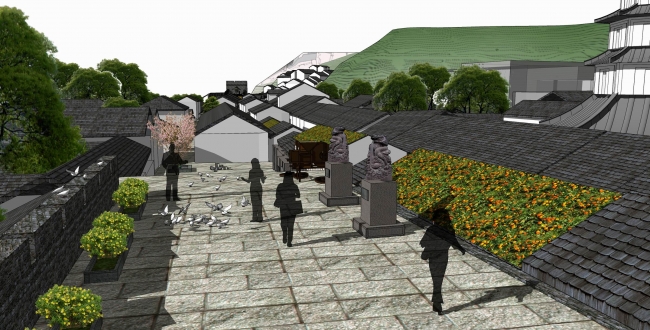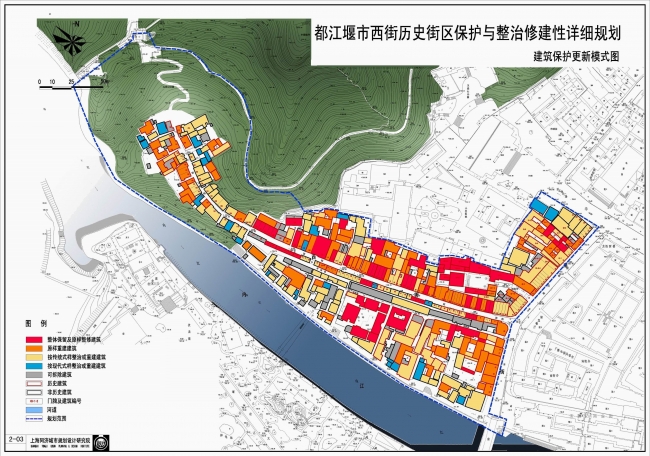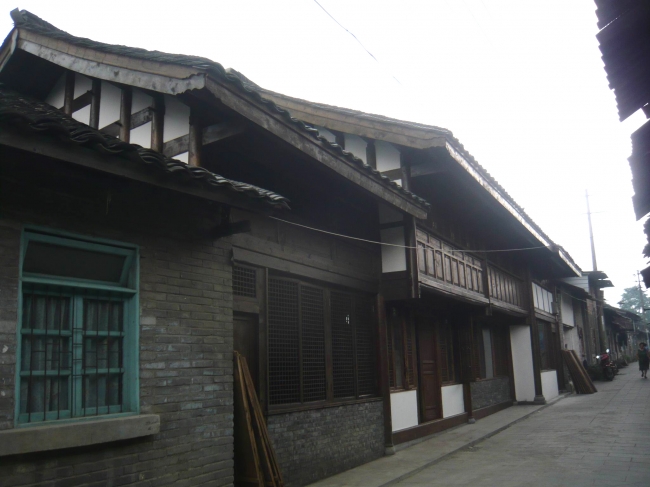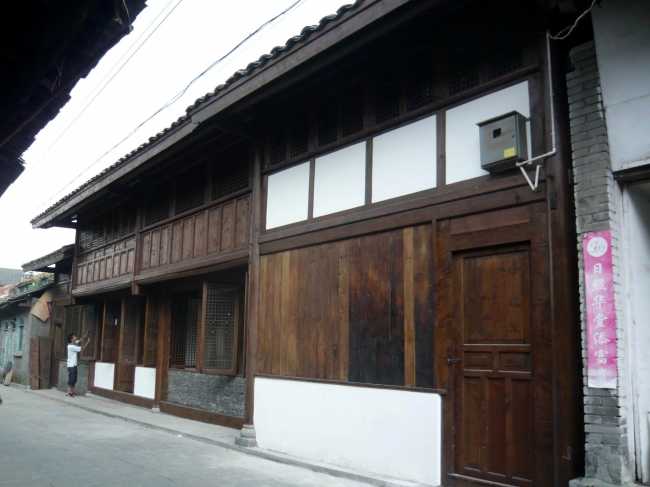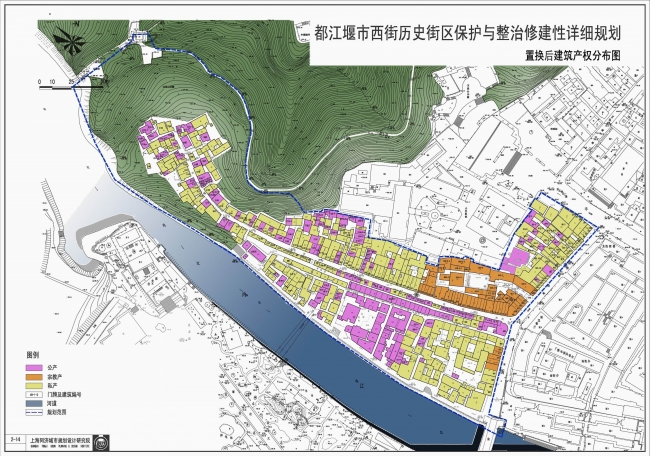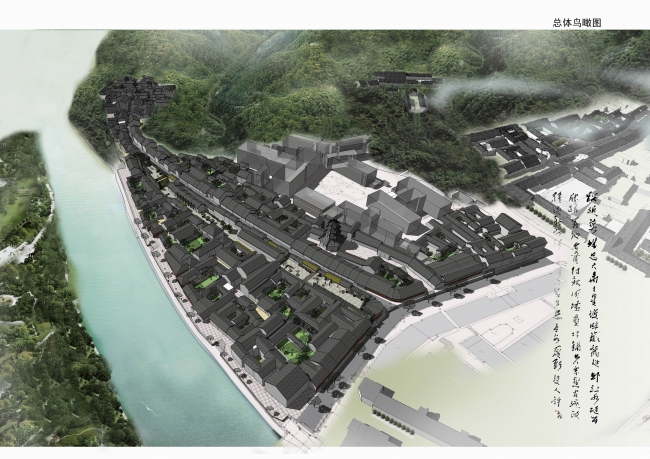| Protective Renewal Practice of West Street Historic District in Dujiangyan City |
| From:Shanghai Tongji Urban Planning and Design Institute PublishDate:2013-02-28 Hits:8463 |
| The protective renewal project of West Street was carried out in the context of post-disaster reconstruction after "5.12" earthquake, with the cooperation among the local government, residents and planners. It's an innovative attempt to balance the reconstruction policy and residents' interests, the implementation mode and protection requirements.
Firstly, a participatory mechanism of the local residents is provided in the reconstruction policy. First of all, residents can choose to move out or stay. Secondly, those who choose to stay should form an owner-committee based on the unit of each courtyard, in accordance with the provisions of Property Law to exercise the rights and obligations of owners to make the reconstruction resolution. In addition, residents can participate in local planning, housing design, and reconstruction procedure.
During the implementation process, the government's understanding of the planning goals has also undergone a fundamental shift, from the initial concept of complete demolition and reconstruction to gradual realization that a number of intact traditional houses in historic blocks need to be conserved, and further policies need to be introduced to support the protection of traditional houses.
Secondly, the planning provides the principle of "Gradual Evolution", in order to prevent large-scale protection works to damage the block's diversity and over-commercialization, which may result in "protective damage". Combined with reconstruction policy and rehabilitation requirements the dynamic participatory concept was put forward as "resident participation, planning optimization" in the implementation, to avoid the "standardization" that a simplified reconstruction policy may cause, and to achieve the self-renewal and the social development goals of continuation of the local network of people. For the divergence between the residents' intention and reconstruction policy, and the stalemate of waiting and seeing, some pilot cases were carried out as an experiment, in order to let the residents who were involved in reconstruction have a real experience of housing quality after reconstruction and repair, and to get the sub-approved housing standards and construction costs.
This multi-subjects renewal mode of the West Street is different from the original simple model of large-scale demolition and construction, and is also different from one-time "Facade Polishing" works. The planning concepts of "protecting heritages, inheriting civilizations, improving facilities, benefiting residents" gradually got recognized by the government, the people and the communities, and it is tend to be the developing trend of Urban Renewal.
|
- News | WHITRAP Shanghai and CNR-ISPC bilateral meeting
- News | WHITRAP meets Cité de l’Architecture et du Patrimoine
- WHITRAP Hosting "Workshop on Preliminary Assessment for National Focal Points of the Asia Region" in Chengdu
- WHITRAP Shanghai meets UNESCO
- INTERNATIONAL CONFERENCE PRELIMINARY ANNOUNCEMENT & CALL FOR PAPERS
- Observation of the 46th Session of the World Heritage Committee
Copyright © 2009-2012 World Heritage Institute of Training and Research-Asia and Pacific (shanghai)


